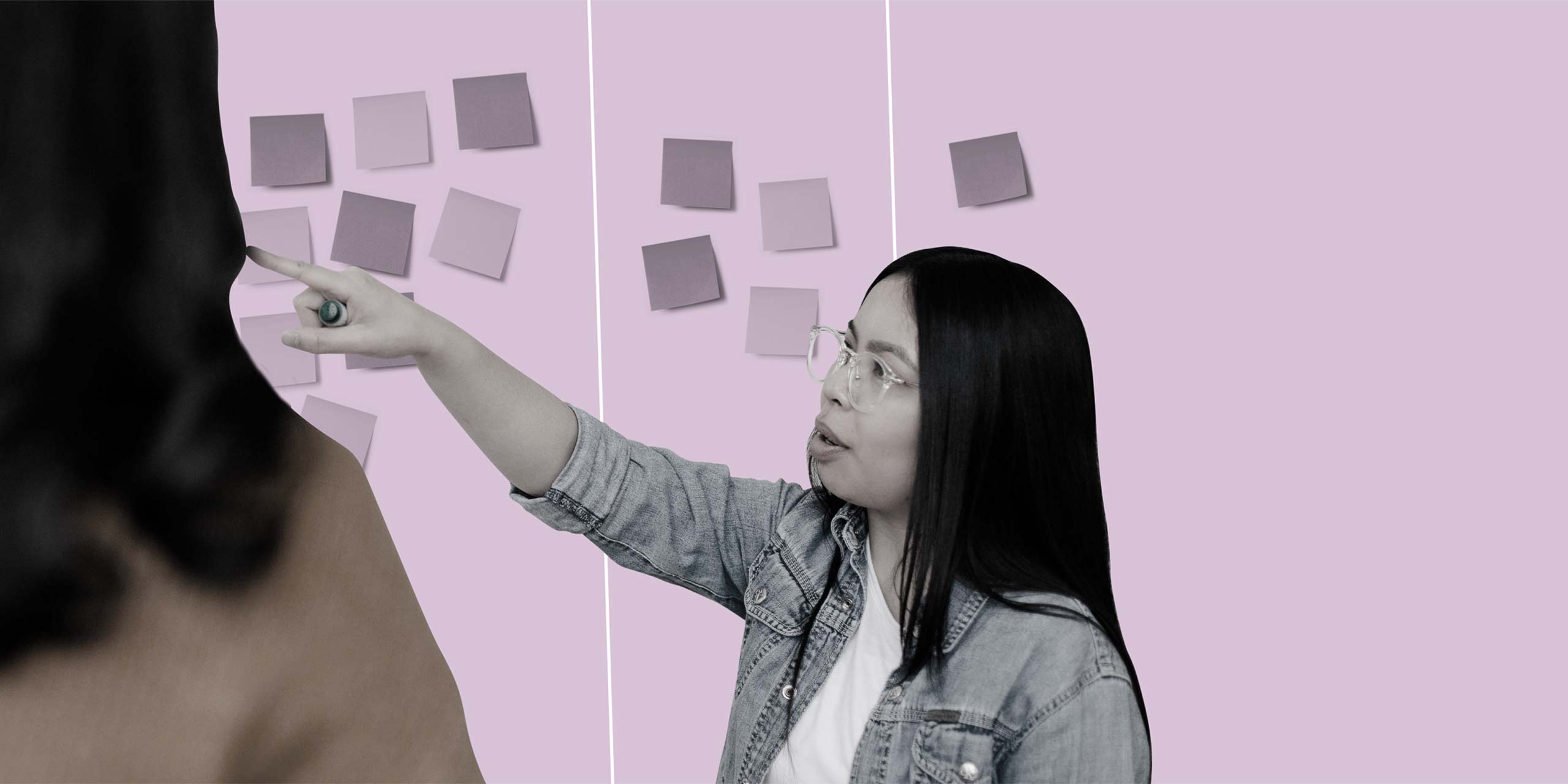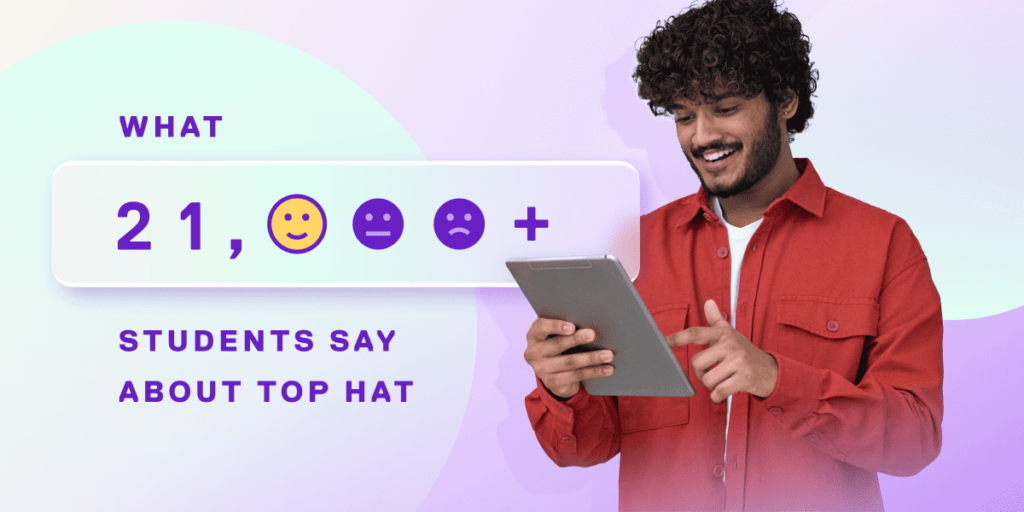Agile learning takes its inspiration from the concept of ‘agile’ as used in the world of technology. Agile teams collaborate on projects and provide ongoing feedback, dealing with minor bumps in the road before they become major obstacles. If something doesn’t work, they change course. Agile methodology works in the tech industry, but it’s increasingly being applied to higher education.
In the tech world, agile development refers to iterative processes and continuous improvement. In other words, it’s about trying, failing, reflecting, learning—and then trying again. Agile learning is no different. It’s the understanding that we don’t get things perfect the first time. That a continuous feedback loop—learn/try/fail—is the fastest way to acquire knowledge and improve.
Promoting collaboration
Software developers have traditionally not been able to afford spending months (or even weeks) developing new products and services. Speed requires delegation, and that requires working together: an important skill for all students to learn, whether they’re going into technology or other fields.
“A lot of software developers are not overly collaborative, but this is a process that almost forced them to collaborate and build onto each other’s ideas,” Elon University academic Rebecca Pope-Ruark told Top Hat’s Philip Preville in a recent webinar.
Pope-Ruark, an associate professor of English and author of the book Agile Faculty: Practical Strategies for Managing Research, Service, and Teaching, says she was looking for ways to help students collaborate when she came across the Agile Manifesto, a declaration by tech entrepreneurs aimed at improving the process of software development. “Agile is about doing things in smaller chunks in quick amounts of time,” she says. “It’s really a culture change in a lot of organizations.”
It’s a philosophy or ideology that values individuals and interactions over processes and tools; it responds to change rather than following a plan. That’s not to say plans, tools and documentation aren’t important, only that they’re not always necessary.
Agile learning and encouraging failure
Earlier in her career, Pope-Ruark would assign her students group projects. But she was often disappointed with the result. Sometimes a project had been slapped together the night before; sometimes a Type-A group member had clearly done the majority of the work.
That’s when Pope-Ruark decided to take a page out of the agile playbook, using group work (scrum teams) and daily updates (standups) to continuously track progress. “Students can’t hide,” she says. “If you didn’t do the work that you said you were going to do in the previous class, you have to admit that in the standup.”
An agile learning approach makes students accountable. But it also allows them to fail. In fact, they’re encouraged to fail; it’s part of the iterative process. They try, fail, learn and try again. And instructors can quickly see where students might need extra help.
Agile methodologies include sprints, scrums and standups. Agile is a form of project management, one that can easily be applied to a classroom environment.
A sprint, for example, falls under the agile umbrella. Like a race, it has a start and finish line. Traditionally in higher education, group work is more like an ultra-marathon, where the feedback loop might last an entire semester.
By applying agile learning methods, students are given a specific duration of time—a class period, or a week—in which to deliver the goods (such as a group project). Typically, these are short periods of time, not a month or a semester. It is a sprint, after all.
After each sprint, students reflect on what happened so they can make improvements, prioritize tasks and change course if necessary. Once a sprint ends, another begins.
Scrums in agile learning
Scrums also fall under the agile learning umbrella. A scrum team, or agile team, works collaboratively toward a goal using an empirical agile approach. In the software development world, a scrum team may need to quickly change course to deal with customer demands or an evolving market. But scrums can apply in the classroom, too—particularly within group projects.
Group projects can contain a regular recap in the previously mentioned standup (the idea is to stand up during the meeting, so it doesn’t take too long). In a standup, scrum team members answer three questions: What have I done since we last met? What will I do today? What issues (if any) are slowing my progress?
With scrums, one person can’t unfairly take over a project—the first persistent complaint among students for group projects—and it will be immediately apparent if someone else isn’t pulling their weight. It also allows the scrum team (and instructor) to identify any impediments or roadblocks.
Progress can be measured on a scrum board or Kanban (a visual workflow management tool). Whether using a whiteboard and sticky notes or a digital version that serves the same function, students working together can track their progress using three columns: things to do, work in progress and work completed.
A scrum board or Kanban board creates a visual representation of the team’s workflow, so they can easily see what they’ve accomplished, what needs to get done and what impediments they’re facing.
A key principle of Kanban, however, is to limit how much work is “in progress”—or how many sticky notes are in the middle column. Rather than tackling a dozen tasks at the same time and not actually accomplishing anything, each team member can hone in on one or two specific tasks.
But agile principles can also help students organize their own course load as well—by planning for deadlines, breaking larger tasks into smaller sprints, and keeping that all-important “in progress” column as clear and organized as possible.
While the agile framework was designed for software development, it’s well suited to the classroom and for individual learning, as it helps to build a culture of continuous development. After all, the faster we fail, the faster we can learn from those failures and keep on improving.
Want to learn more about agile learning? Watch our free on-demand webinar, Balancing Academia: Managing Research, Teaching and Service Using Agile Methodologies, by filling in this simple form:
Related pages
Learn more about what a collaborative classroom is
Learn more about Top Hat’s collaborative learning software


